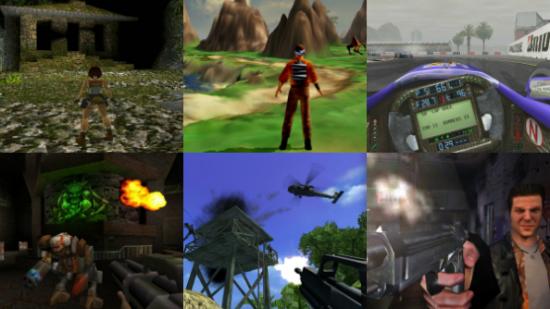This profession, to quote Ving Rhames in Pulp Fiction, is filled to the brim with unrealistic motherf- um, Hubbards. Mother Hubbards who thought their ass would age like wine. If you mean it turns to vinegar, it does. If you mean it gets better with age, it don’t.
For every genuinely timeless classic PC game, there are a hundred also-rans, lauded in their time but too fiddly and outmoded to be enjoyable today. They’re still brought up in misty-eyed conversations and spoken about in hyperbolic terms, because for a lot of people they exist as time capsules filled with fond memories that can’t be destroyed. But there’s a difference between the games that hold up to scrutiny years after release, and the ones that hold happy memories but objectively play like hot garbage in 2016. Presented with no particular glee (I have lots of nostalgia for these games too), here are a few such unfortunate relics.
If you’re looking for the old games that truly do still play like a dream, try these old gamesthat are still worth playing.
Quake II
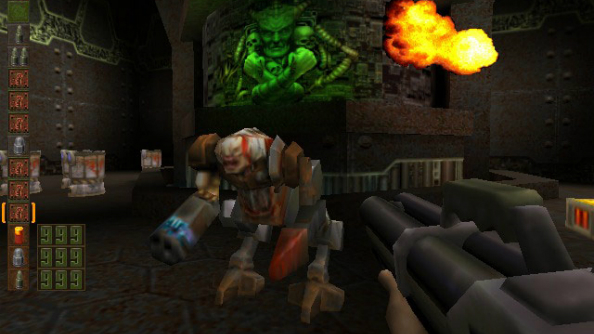
Quake II was released during a magical late nineties spell in which it seemed each big blockbuster shooter raised the bar for the entire genre in a meaningful way. Its predecessor had certainly done that in 1996, marrying groundbreaking 3D polygonal graphics with chunky weaponry and thick atmosphere. Its sequel would do it in 1999, boiling down that established weapon set and id’s technical flair into an astonishingly brutal and pure multiplayer game.
And upon its own release in December 1997, Quake II got more than its fair share of the plaudits, too. It was the Best Shooter Ever of its day, until Unreal and Half-Life turned up to wrestle that title away from id.
Playing Quake II in 2016 is a very different proposition. No longer caught up in the hype or seduced by its graphics, the experience you’re left with is akin to wading through a muddy pond, armed with only peashooters of varying sizes.
It’s clear now how much the game benefitted from the id name. It’s connective tissue between two great games that struggles to display any charisma of its own; too gung-ho and earnest about its Jim Cameron movie aspirations to top Quake, but not mechanically refined or forward-thinking enough to match Quake III Arena’s calibre. And, worst of all, most unforgivably, the weapon feedback is abysmal.
Let’s remember how central shooting was to the FPS in 1997 – walking over a coloured keycard was your only other means of interaction with the world. If the guns weren’t fun, there was literally nothing else to find enjoyment in. So it is with the infamously brown Quake II, whose machine gun appears to have been shaped from play-dough and produces an impotent rat-a-tat-tat. Whose quad shotgun – an excellent concept – fires so slowly that civilizations rise and fall before the next shell enters the barrel. Whose railgun – okay, the railgun’s great, I’ll leave that alone. But elsewhere your entire armoury feels as though it’s taken a step backwards from Quake I, either not hitting hard enough, hitting too slowly, too inaccurately, or victim to design masterstrokes like making automatic rifles kick up to simulate recoil.
There’s also the issue of why Quake II is a Quake game at all. It’s set in a completely different universe to its predecessor, and it’s going after an entirely separate tone. Unfortunately for anyone hoping to enjoy it in 2016, that tone is the same exact blend of Aliens and Commando that thousands of FPS titles shot for in the following years. Quake’s occult leanings and devilish aesthetic is still disturbing now because it still feels like a singular vision. Quake II’s gung-ho space marine shtick is beyond cliché now.
The final nail on Quake II’s coffin is its ghastly appearance. As empirically wrong as it feels to type that as someone who remembers how great it looked upon release, the subsequent years have been kinder to Val Kilmer than they have this game. The problem is that it isn’t quite old enough for that smooth, Voodoo 2 era look to be cool yet. Quake is very cool again, thanks to Devil Daggers, Back in 1995 et al, but the 1997 aesthetic hasn’t been commandeered by pixel hipsters yet and been gentrified by Devolver indie games. It’s still just a run-down neighbourhood.
Far Cry
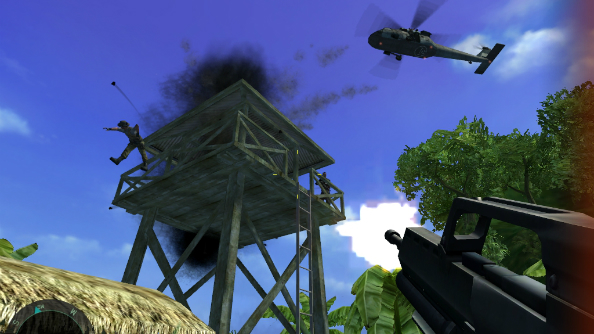
The shared quality you find in true classics in gaming is that nobody, before or since, has done the same thing quite as well. This much cannot be said of 2004’s Far Cry.
Lauded at the time for scarcely believable graphics and open-world levels of a scale we simply hadn’t journeyed across before, it’s been riffed on so many times in the intervening 12 years that there’s little left in the original to enjoy. Developers Crytek took the tropical setting, impressive scale and even oddly specific elements like pacific war ruins, and poured them into 2007’s Crysis. Not only does Crysis still look good on 2016 monitors, it introduces the Nano Suit, a set of powers you really miss after having had them.
Ubisoft took the name and ran with it in several different directions until perfecting the tropical open-world shooter formula with Far Cry 3, itself approaching four years old. Broadly, FPS games have been looking towards open world environments ever since, and offering varying tactical approaches with increasing sophistication. While Far Cry might have set some of those trends in motion, that doesn’t change the fact it looks and plays like a load of old bum these days.
“Are you okay?” mercenaries ask their nearby team-mates after watching you shoot them in the face with an assault rifle. “Must have been nothing”, they conclude after a nearby jeep literally explodes. After you explode it with your guns. Very deliberately. And yet in other instances they’re entirely capable of spotting you from a kilometre away and alerting every other guard in the level to your presence in an instant. Artillery rains down on you with pinpoint accuracy from boats you need to use your binoculars to make out, and every militiaman on that island is capable of shooting you totally unsighted through a wall based on his sense of hearing alone. Its level of difficulty, even on easy mode, is just bizarre, and smacks of a bunch of systems that just don’t work together.
Stealth mechanics and open-world route-planning have come a long way since Far Cry, and so have sunny beaches and tropical forests. Crytek ensured their debut title wouldn’t stand the test of time when they chose to keep so close to it with the technically superior Crysis, but the telepathic mercs and absurd monsters of that island only have themselves to blame for their irrelevance now.
Grand Prix 3
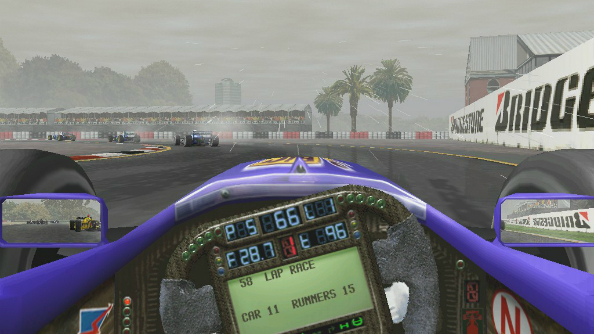
I take no pleasure in telling you that Grand Prix 3 isn’t fun anymore. This isn’t like watching the billionaire debutante serve jail time for her DUIs as her past finally catches up with her. This is Grand Prix 3, one of the most respected racing simulations of its day.
It isn’t the graphics that are at fault, though they do very much belie 15 years of subsequent advances elsewhere in PC gaming. It isn’t even the tobacco-free liveries that appear on its cars; there have been mods to sort those out since God was a boy. It’s worse than that. It’s the driving.
How can this be? You’ll ask yourself, feeling stuck to a set of invisible rails as you snake through a strangely flat Spa-Francorchamps. You may try fiddling with driving aids, to no avail. It just doesn’t feel like driving a car. It’s possible to get a gamepad working with Grand Prix 3, in the same way it’s possible to perform a triple heart bypass on the next person you see, but equally inadvisable. Even with a steering wheel, the game just doesn’t offer the right feedback and sense of motion that it seemed to, back in the day. I’m crying as I write that. Do excuse me.
There’s happier news – Grand Prix 4 is still reasonably playable, and most of the excellent mods created for it at the time can still be found. Grand Prix 3 laid down its longevity so that future racing simulations could prosper, and there’s something incredibly noble about that, don’t you think?
As is so often the case in genres that strive ultimately for a perfect 1:1 simulation of the sport they’re licensed for, each new iteration renders the last that little bit more irrelevant, and the leaps forward from Geoff Crammond himself, EA, and later Codemasters, have done for poor GP3 good and proper.
Tomb Raider
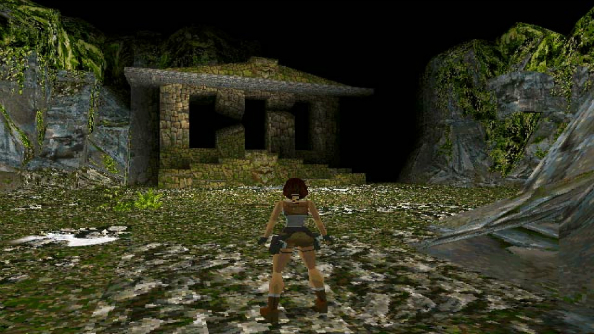
If you have love for Lara’s 1996 debut, there’s still a lot of enjoyment to be had by revisiting Tomb Raider in the present day, but the cold, sad truth is that there’s a lot more hard work.
Though the game has gone down as a PlayStation icon, it was released on PC the very same day: 22 November 1996 here in the UK. The reason it never gained the traction with PC fans that it did on PSX was in large part due to it being, as was the fashion at the time, a pretty shocking port. Few of us had gamepads for our PCs, and the keyboard controls were beyond wooden. Lara’s is a fiddly game even experienced on her spiritual home soil; trying to achieve those same pinpoint-precise sideways jumps using shift and the arrow keys, and killing local wildlife without any discernable aim mechanic is a living nightmare on PC. It was in ’96, and it is now.
Of course, we have the benefit of much better gamepad support natively in Windows now, but Tomb Raider hasn’t been keeping up with the times. DOSBox is required to get it running on later operating systems (and by later I mean ‘after Windows XP’), and for proper controller support and high resolutions, be prepared to perform actual human sacrifice.
But there’s more to it than Lara being a bit stubborn about running in Windows 10 on your giant 27-inch monitor. Both her platforming and combat are seriously rudimentary now. You’re shimmying her up giant cubes and trapezoidal prisms carved from stone, and that doesn’t feel very immersive anymore. 1996’s puzzle design leaves much to be desired, preferring opaque path-finding and random lever-pulling to the logical knots of later action-adventure titles. Meanwhile, the appearance of any foe, great or small, places you completely at the mercy of the game as it decides whether Lara will aim her guns at the target, or whether you’ll instead fire wildly in the wrong direction, expending scarce ammo.
I’m not going to pretend the main menu alone isn’t a massive nostalgia hit that almost single-handedly convinces you to try playing through it all again for old time’s sake. But trust me, it’s not worth it.
Outcast
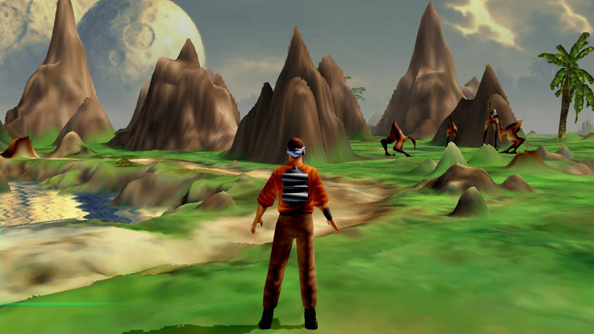
This is one of those ‘all-time classics’ that more people have played out of curiosity years after release than ever did at the time. In 1999 it was every magazine’s favourite adventure game, brave and weird, if a bit rough around the edges. A game whose ambition outweighed its execution. Roll the clock forwards 17 years, and those rough edges have become canyons from which it’s now impossible to climb out of.
You are Cutter Slade, owner of the most nineties videogame name and sarcastic interloper on the alien planet of Adelphi. Ahead of you are hours of exploration, conversation and combat in a rich and well-written adventure. You really can’t fault developers Appeal for the depth of their vision. Particularly after you’ve had a go at shooting something, and quickly realising there are far more pressing things to have a go at them for.
It seems as though at least half the problem is the game engine itself. Using a mixture of ray casting for the environments and textured polygons for the objects within them, it never quite worked in 1999 and demanded monstrous systems to get decent frame rates out of it. Now it’s at least less of a system hog, but the smorgasbord of clipping issues are preserved like so many flies in amber to remind us what PC gaming used to be like.
It’s not that rare to find Cutter standing in completely empty space during conversations when the camera takes a particular angle, only to have the entire world pop back into view when it shifts back to the alien you’re chatting with. And, um, that’s not very good.
Persevere and there is a lot of well-considered world building, but playing in modern day makes you feel an outcast in the wrong ways, unable to properly interact with the world as you’d like, or build any confidence in its systems.
Max Payne
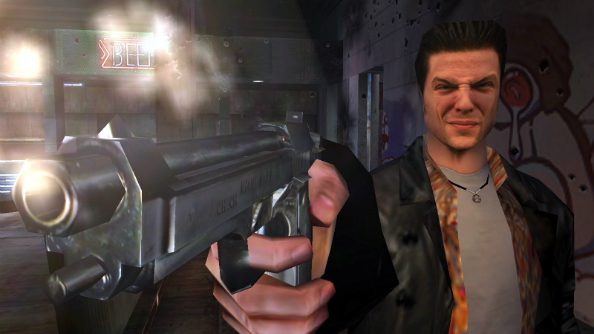
The whole thing about Max Payne, beyond that iconic pained expression and the comic book panels, was its fluidity of movement. Here, after decades of feeling like a two-legged tank, was a game that let you dive gracefully from room to room as if guided by the hand of John Woo himself. A game that also happened to introduce one of the most important mechanics of forever with bullet time.
So when you boot up Remedy’s 2001 game now and find Mr Payne an awful gangly mess to control, it’s a problem. He’s a victim of his own success, this one. Everyone paid such close attention to what he was doing at the time, and subsequently iterated on it, that he no longer feels lithe like a Hong Kong blood opera star imbued with Matrix powers.
It’s still pretty hard not to enjoy the cod-noir bravado in Max Payne’s voiceovers and comic book sequences. Likewise, the stranger, Lynchian influences that crop up in the form of TV show Address Unknown and that baby anguish nightmare maze help to distinguish Max Payne from the glut of similar third-person shooters with slow-mo mechanics. But at some point you have to ask yourself: is it worth diving clumsily into the next room full of NY thugs, having Max’s trajectory ruined by a boardroom desk, and ending up lying half-underneath a chair shooting wildly at kneecaps?
Not anymore it isn’t. Sorry Max.
That one game you played loads as a kid but no-one else did so there’s no Windows 10 patch for it
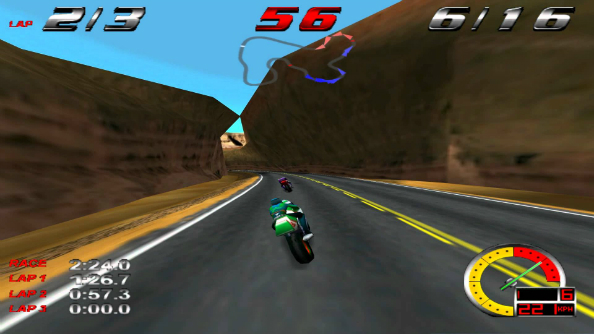
You grew up thinking Redline Racer was part of the great PC gaming songbook. A space we all inhabited at some point, like Doom and The Oregon Trail. One of our great cultural touchstones. Then you tried to install it on a modern PC and realised, no, no-one else cares about it. No-one has made a patch to stop it wanting DOS. No-one fixed the bug that makes it run at 200% speed now. Or that other bug that makes it take over an hour to load a level. Because the type of people who fix those things are busy patching games other people played. Sorry.
(Don’t worry, there are actually workarounds for Redline Racer on later versions of Windows if reading that has upset you.)
Have you revisted an old treasure recently, only to find it falls to dust in your hands when you try to play it? Tell us about it in the comments below.
